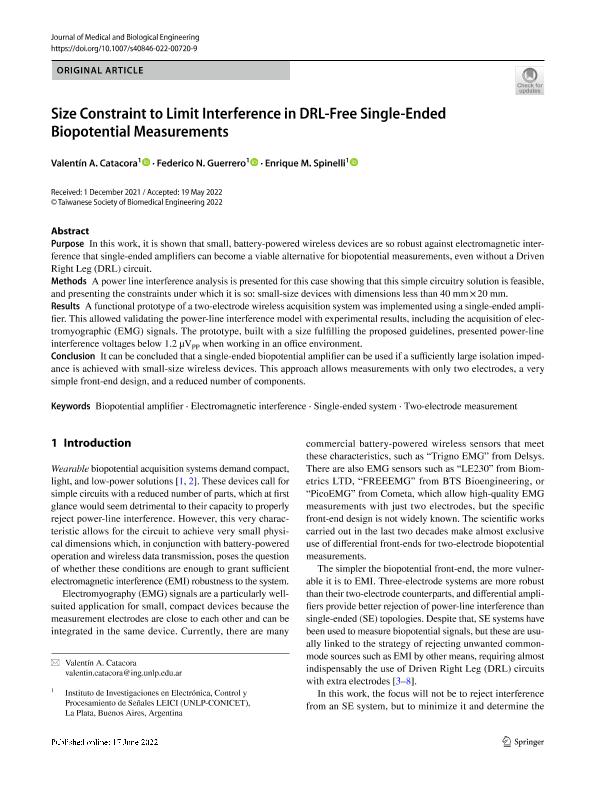Artículo
Size constraint to limit interference in DRL-free single-ended biopotential measurements
Fecha de publicación:
06/2022
Editorial:
Institute of Biomedical Engineering
Revista:
Journal of Medical and Biological Engineering
ISSN:
1609-0985
Idioma:
Inglés
Tipo de recurso:
Artículo publicado
Clasificación temática:
Resumen
Purpose: In this work, it is shown that small, battery-powered wireless devices are so robust against electromagnetic interference that single-ended amplifiers can become a viable alternative for biopotential measurements, even without a Driven Right Leg (DRL) circuit. Methods: A power line interference analysis is presented for this case showing that this simple circuitry solution is feasible, and presenting the constraints under which it is so: small-size devices with dimensions less than 40 mm × 20 mm. Results: A functional prototype of a two-electrode wireless acquisition system was implemented using a single-ended amplifier. This allowed validating the power-line interference model with experimental results, including the acquisition of electromyographic (EMG) signals. The prototype, built with a size fulfilling the proposed guidelines, presented power-line interference voltages below 1.2 µVPP when working in an office environment. Conclusion: It can be concluded that a single-ended biopotential amplifier can be used if a sufficiently large isolation impedance is achieved with small-size wireless devices. This approach allows measurements with only two electrodes, a very simple front-end design, and a reduced number of components.
Archivos asociados
Licencia
Identificadores
Colecciones
Articulos(LEICI)
Articulos de INSTITUTO DE INVESTIGACIONES EN ELECTRONICA, CONTROL Y PROCESAMIENTO DE SEÑALES
Articulos de INSTITUTO DE INVESTIGACIONES EN ELECTRONICA, CONTROL Y PROCESAMIENTO DE SEÑALES
Citación
Catacora, Valentin Andres; Guerrero, Federico Nicolás; Spinelli, Enrique Mario; Size constraint to limit interference in DRL-free single-ended biopotential measurements; Institute of Biomedical Engineering; Journal of Medical and Biological Engineering; 42; 3; 6-2022; 332-340
Compartir
Altmétricas




